
Wednesday January 11th to Tuesday January 17th 2023
There has been a huge impact on rail services to and from London, Bournemouth and Weymouth as over the weekend, heavy rain washed away a clay embankment northeast of the Hampshire railway station of Hook situated between Basingstoke and London Waterloo. Passengers were advised against all but essential travel over the coming days on services which would usually pass through the area on the South West Main Line. The great majority of trains will not be able to run and repairs may take weeks before services are restored. As a result no trains will be stopping at Hook, Winchfield or Fleet.

Network Rail will need to build an access road to enable heavy machinery designed for piling to be brought in and repairs carried out around the clock. The embankment, originally built 190 years ago, is made of a mixture of London Clay and other local soils. Although there have been landslips at this location previously, they are becoming an increasing problem across the network because of drier summers and wetter winters with more intense rainfall which is a particular issue for clay embankments.

The slip, which left one track hanging in mid-air, happened when the soil gave way along a 44-metre section of 10m high embankment, sliding out from underneath the tracks meaning only two tracks of the four-track railway are passable by trains. Both of the intact tracks are designed to be used by London bound trains only. This was the worst of 13 different flooding related incidents during the recent rainfall, which also included major flooding at Sway increasing the disruption on the already revised timetable between London Waterloo and Weymouth. South Western Railway (SWR) will run a service from Weymouth which will terminate at Basingstoke and a very limited shuttle will operate between Basingstoke and Woking, from where services continue thereafter.

Wednesday 11th January, before the latest period of rain, Swanage based Class 33 No. D6515 (33012) ‘Lt Jenny Lewis RN’ hauled Network South East liveried Class 50 No. 50026 ‘Indomitable’ from the Purbeck Heritage Line to Eastleigh Arlington working as 0Z50 0942 Swanage to Eastleigh Arlington (ZG). After dropping off the Class 50, the Crompton headed back to Swanage light engine the afternoon of the same day.


On Sunday, Yoshi stayed with his mum while I headed towards Eastleigh to visit an old friend and a chance to put the world to rights. I obviously took the opportunity to get some railway time in on my way and my journey took me via Totton Yard, Freightliner Southampton MCT – which was quite full of locomotives with examples of Class 66’s, Class 70’s, Class 47 No. 47830 – and of course Eastleigh itself!


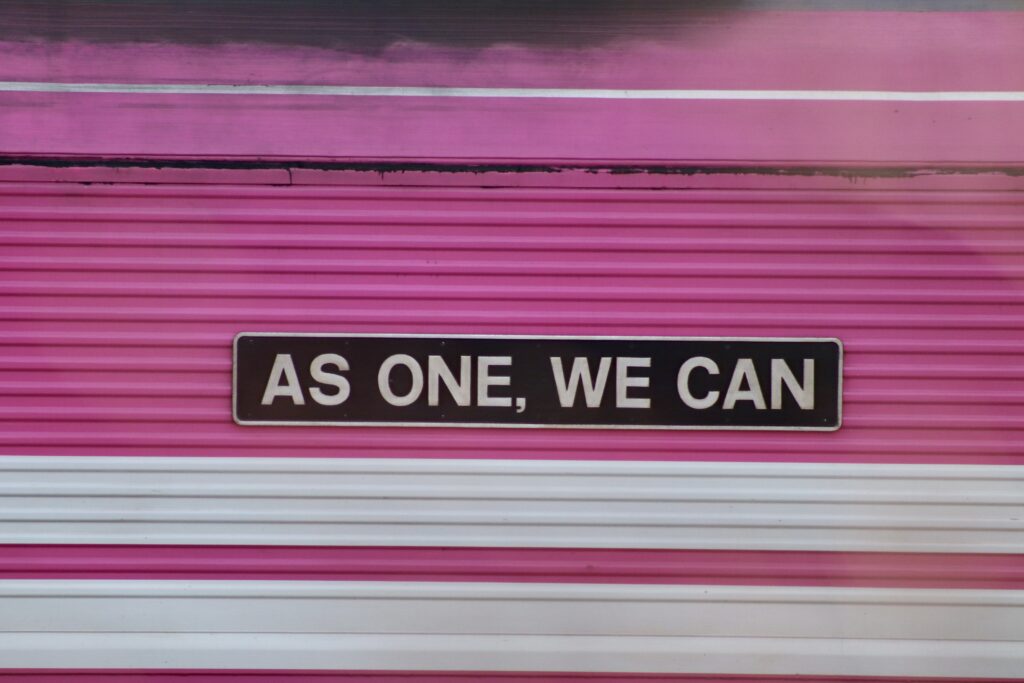


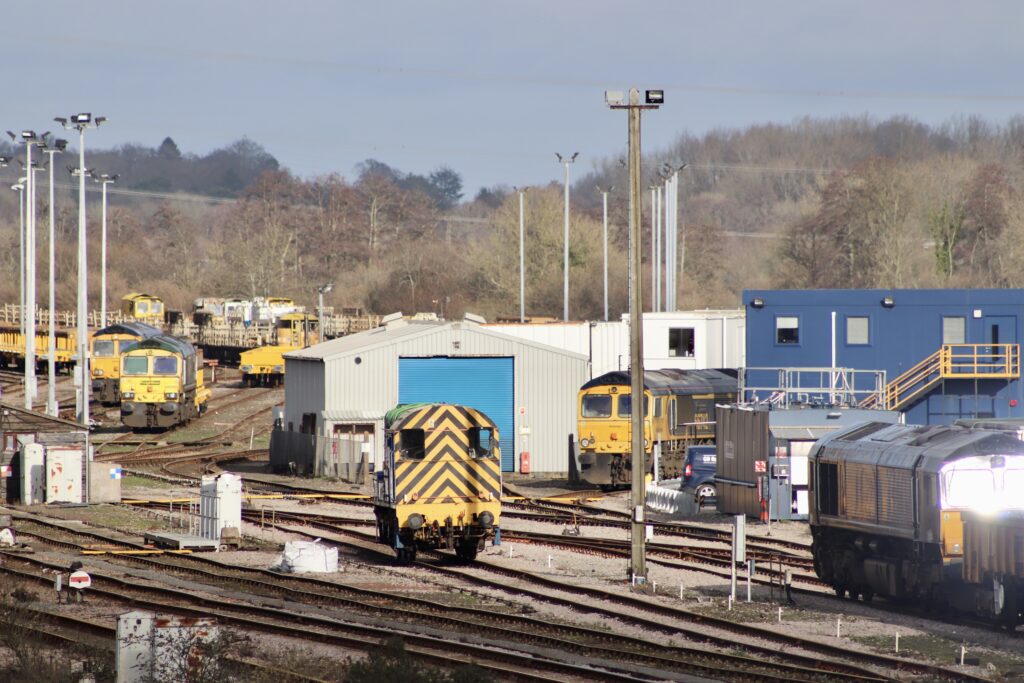
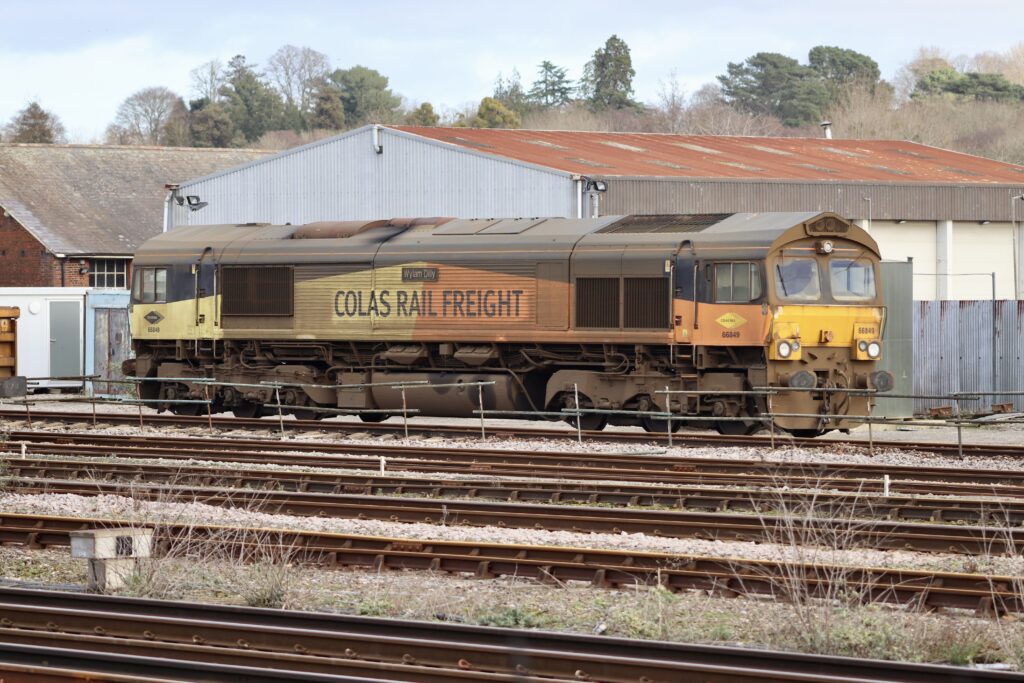

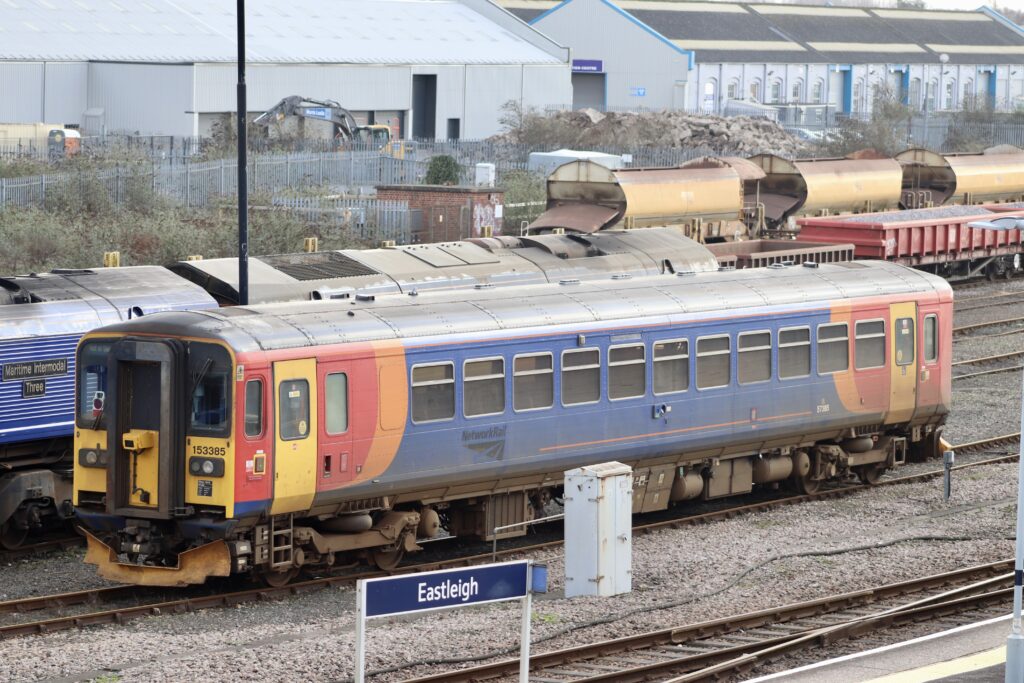

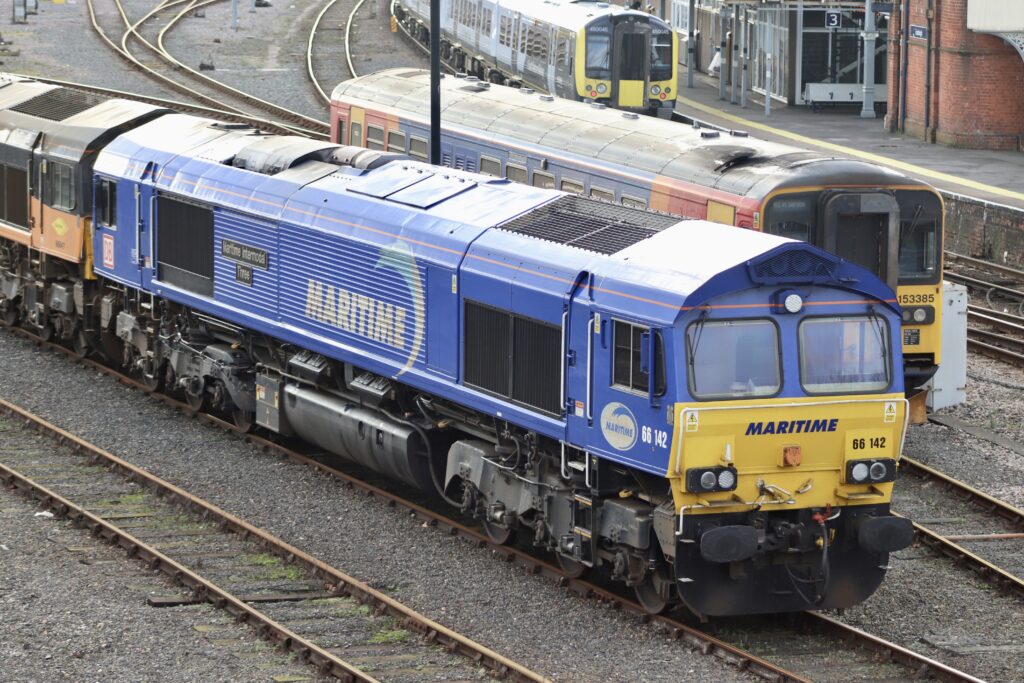
Monday 16th January was panning out to feature a busy evening with the Snow & Ice Treatment Train (SITT) based at Totton Yard and the regular 1Q51 test train visiting the Bournemouth to Weymouth line. Much anticipation here when Colas English Electric Class 37’s No.’s 37116 and 37610 were allocated to the test train, normally in the hands of a pair of top and tailed Class 73 electro diesel locomotives, at Derby. However it soon became clear that the landslip at Hook meant the train would be forced off-route at Virginia Water, eventually terminating at Reading Triangle Sidings, instead of running to Weymouth via the South West Main Line and back to Eastleigh East Yard from where the consist normally operates over the rest of the week before returning to Derby. The train eventually continued to Eastleigh the following day, but at the time of writing, has not covered the section of line from Totton to Weymouth.
Early Monday evening, the SITT was showing as cancelled on RealTimeTrains(RTT), although upon checking the following morning it was clear that the service did in fact run, at least as far as Dorchester South.

From The Archive
January 2023 marks the 160th Anniversary of the launch of the World’s first underground railway; The Metropolitan Line, in 1863. Ten years ago on 13th January 2013, scenes not witnessed on the central London sub-surface sections of underground since July 1954 marked the start of LU150, a year long celebration, as an 1898 built steam locomotive puffed in and out of the tunnels, surprising unsuspecting passengers and delighting railway enthusiasts. I was one of those who enjoyed the spectacle as the short video below shows:
The following is adapted from The London Transport Museum’s ‘History of the Tube’;
Back in 1863 the underground railway was intended to reduce street congestion, which by the 1850’s had reached a crisis point. Upon opening, The Metropolitan Railway was an immediate success, although its construction had taken almost two years and caused huge disruption as the sub-surface lines were built by digging a long trench, laying track and covering it over again (known as the cut and cover technique) leaving a tunnel system which were at first operated by steam trains. The 5.6km line connected the mainline stations at Paddington, Euston and King’s Cross to Farringdon, at the edge of the City. Success meant that extensions to both ends of the line soon followed.
In 1868, The Met was joined by an associated railway company; the Metropolitan District Railway with the intention that the two would cooperate to form an ‘Inner Circle’, linking all London’s mainline termini. However, disagreements over money led to a falling out and both companies instead chose to prioritise their individual extensions. The Circle was only completed after government intervention in 1884.
Despite their differences, the Met cooperated with the District Railway in plans for electrification in 1900. However, their ideas were rejected when a powerful American businessman, Charles Tyson Yerkes, took over the District and a group of struggling Tube schemes in 1901. Under Yerkes, the Circle and District were electrified along American lines by 1905, powered by a new generating station at Chelsea. The Met built its own power station at Neasden using the same system but electrified more slowly.
In 1908, the separate companies started to work together to promote the system as a coherent network under the UndergrounD brand. Gradually most of the companies merged and the network expanded, as the population of London soared. The resultant station architecture of the 1930’s is highly regarded.
The Met had been exploiting the land along its lines since the 1880’s but entered a new phase when their first housing estate was built at Pinner in 1900. The name ‘Metro-land’ was coined in 1915 to publicise the area, and in 1919 a subsidiary company was set up to concentrate on housing. Throughout the 1920’s and 1930’s, thousands of homes were built. Gradually Metro-land was electrified, with services to Harrow in 1908 and Rickmansworth in 1924. A new electric line from Wembley Park to Stanmore opened in 1932, but further north steam locomotives continued as before.
While the rest of London’s underground railways all succumbed to the domination of the railway group Yerkes founded, the Metropolitan alone remained independent. The Metropolitan Railway had regarded themselves not as a commuter railway, but as an ambitious player in the mainline railway world, extending out from Baker Street in the 1870s and 1880s into open country. By 1899, at the height of their powers, they had reached Verney Junction and Brill in Buckinghamshire, more than 80km from Baker Street.
The Met was forced to give up their independence when all of London’s public transport – buses, trams and trolleybuses, as well as the Underground railways – came under the centralised control of London Transport (LT) in 1933 and decisions about services could be fully coordinated for the first time. The Met’s mainline ambitions were over, with LT closing the rural Brill branch in 1935 and the withdrawal of services north of Aylesbury a year later. The Stanmore branch transferred to the Bakerloo in 1939.
A massive plan; The New Works Programme, designed to upgrade and expand services was prepared in 1935, but the work was interrupted by the Second World War. Some of these were revived in the difficult post-war economic climate, but others were not.
Modernisation in the early 1960s saw extensive track and signal work and new A stock trains. These worked the line until replacement with S stock trains between 2010 and 2012 under the new Transport for London (TfL) organisation. This was part of wider modernisation project across all the Underground’s sub-surface lines, replacing infrastructure and signalling and introducing automatic operation.
A new Tube line had been suggested in 1943, but delays meant that the new Victoria line did not serve its first passengers until 1968. The Tube reached Heathrow Airport in 1977. Another new line, the Jubilee, was added in 1979. It terminated in central London and was later extended eastwards in 1999.
Today, The Metropolitan Railway lives on as the Metropolitan Line, it has 67km of track and 34 stations, running from Amersham and Chesham in the north-west to Aldgate in east London, as well as a branch to Uxbridge.
Yoshi
Despite his urge to drink water from the upstairs toilet, Yoshi celebrated his 4th birthday on Thursday 12th January. He enjoyed a special doggo cupcake and played with a toy wine bottle for all of ten minutes before tearing it to shreds in an attempt to extract the squeaker.

On that happy note, it brings us towards the end of another blog. Many thanks for visiting, reading, your comments and corrections. For anyone wondering about my car, which broke down last week, things don’t look too good for it. In fact the garage I took it to for repair declined to undertake any further work other than an initial inspection, charging me for the privilege of confirming what the AA had previously already told me. I may get a second opinion, or just cut my losses. I can’t say it’s not been a fun car to drive, but all good things……
Post Script
Seeing Network Rail Class 153 No. 153385 at Eastleigh on Sunday prompted me to have a brief look at this class of diesel multiple unit (DMU).
In the mid 1980’s, looking to replace older DMU’s, British Rail ordered 35 two-coach Class 155 units from Leyland Bus at Workington. In 1990 the decision was made to split each of the 35 Class 155’s into single car vehicles for use on rural railway lines, the work being carried out by Hunslet-Barclay at their plant in Kilmarnock during 1991/92. A new drivers cab was retrofitted into the spaces previously used for luggage racks at the inside end (B-end) of each carriage where they had been coupled together in the Class 155 formation. The new cab is noticeably smaller than the original A-end one, as the position of the exterior doors were not amended during conversion.
Locally, GWR/Wessex Trains utilised Class 153’s on services between Bristol Temple Meads and Weymouth having inherited 13 units from Wales & West.
Transport for Wales currently run a fleet of 26 Class 153’s having modified them to comply with Reduced Mobility Technical Specification Interoperability (PRM-TSI) legislation which came into effect on January 1st 2020. Scotrail have five units which have been modified to provide racks for luggage and bicycles for use on the West Highland Line services between Glasgow and Oban, running them in conjunction with existing Class 156 DMU’s.
In May 2021, Network rail (NR) acquired three Class 153’s to convert into Video Inspection Units (VIU) for infrastructure monitoring services and have been fitted with cameras, recording devices and a generator placed in the saloon to provide power to the tech. One of these is the aforementioned No. 153385:

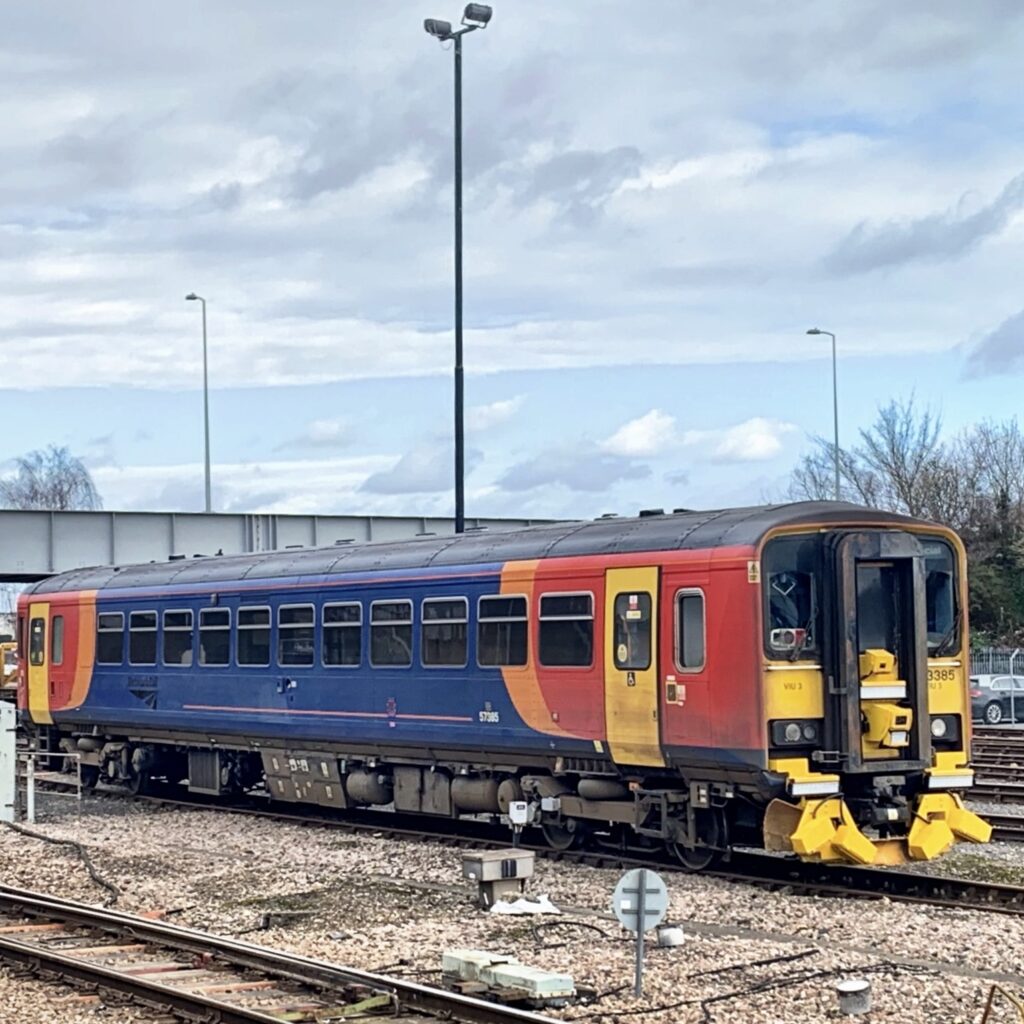
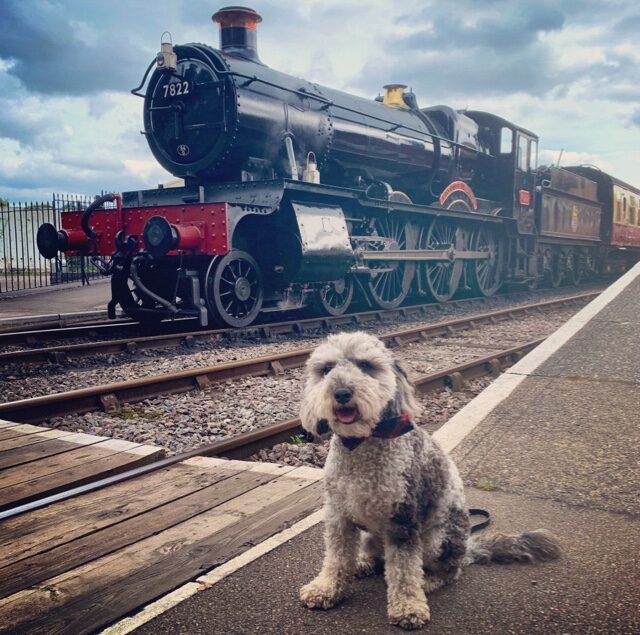
Another super read. The weather at this time of year, with glowing sun in countenance to the bitter cold is a great time of year.
Best bit was the cake though. 🙂
Cake is always the best! 🙂